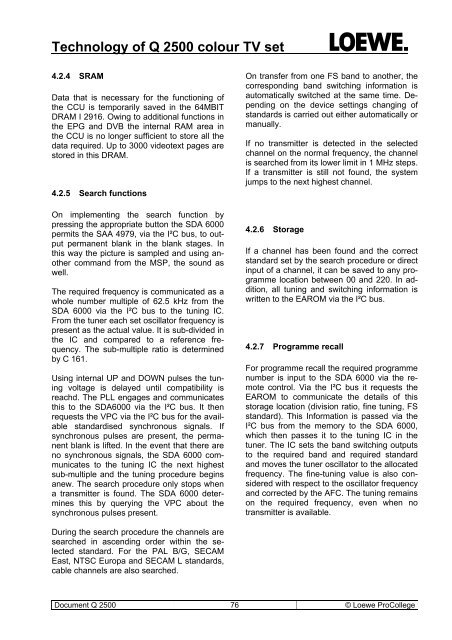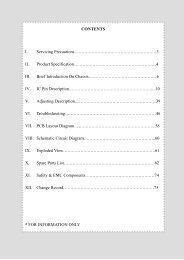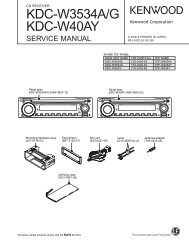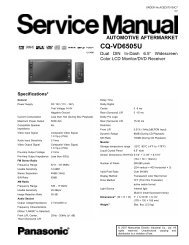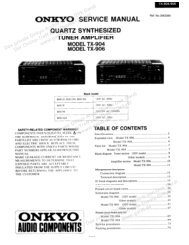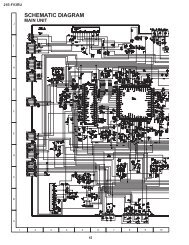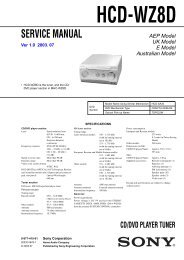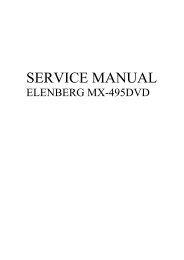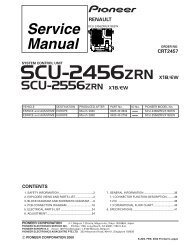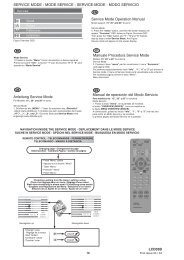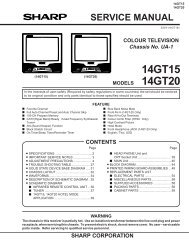Technology of Q 2500 colour TV set
Technology of Q 2500 colour TV set
Technology of Q 2500 colour TV set
You also want an ePaper? Increase the reach of your titles
YUMPU automatically turns print PDFs into web optimized ePapers that Google loves.
<strong>Technology</strong> <strong>of</strong> Q <strong>2500</strong> <strong>colour</strong> <strong>TV</strong> <strong>set</strong>4.2.4 SRAMData that is necessary for the functioning <strong>of</strong>the CCU is temporarily saved in the 64MBITDRAM I 2916. Owing to additional functions inthe EPG and DVB the internal RAM area inthe CCU is no longer sufficient to store all thedata required. Up to 3000 videotext pages arestored in this DRAM.4.2.5 Search functionsOn implementing the search function bypressing the appropriate button the SDA 6000permits the SAA 4979, via the I²C bus, to outputpermanent blank in the blank stages. Inthis way the picture is sampled and using anothercommand from the MSP, the sound aswell.The required frequency is communicated as awhole number multiple <strong>of</strong> 62.5 kHz from theSDA 6000 via the I²C bus to the tuning IC.From the tuner each <strong>set</strong> oscillator frequency ispresent as the actual value. It is sub-divided inthe IC and compared to a reference frequency.The sub-multiple ratio is determinedby C 161.Using internal UP and DOWN pulses the tuningvoltage is delayed until compatibility isreachd. The PLL engages and communicatesthis to the SDA6000 via the I²C bus. It thenrequests the VPC via the I²C bus for the availablestandardised synchronous signals. Ifsynchronous pulses are present, the permanentblank is lifted. In the event that there areno synchronous signals, the SDA 6000 communicatesto the tuning IC the next highestsub-multiple and the tuning procedure beginsanew. The search procedure only stops whena transmitter is found. The SDA 6000 determinesthis by querying the VPC about thesynchronous pulses present.On transfer from one FS band to another, thecorresponding band switching information isautomatically switched at the same time. Dependingon the device <strong>set</strong>tings changing <strong>of</strong>standards is carried out either automatically ormanually.If no transmitter is detected in the selectedchannel on the normal frequency, the channelis searched from its lower limit in 1 MHz steps.If a transmitter is still not found, the systemjumps to the next highest channel.4.2.6 StorageIf a channel has been found and the correctstandard <strong>set</strong> by the search procedure or directinput <strong>of</strong> a channel, it can be saved to any programmelocation between 00 and 220. In addition,all tuning and switching information iswritten to the EAROM via the I²C bus.4.2.7 Programme recallFor programme recall the required programmenumber is input to the SDA 6000 via the remotecontrol. Via the I²C bus it requests theEAROM to communicate the details <strong>of</strong> thisstorage location (division ratio, fine tuning, FSstandard). This Information is passed via theI²C bus from the memory to the SDA 6000,which then passes it to the tuning IC in thetuner. The IC <strong>set</strong>s the band switching outputsto the required band and required standardand moves the tuner oscillator to the allocatedfrequency. The fine-tuning value is also consideredwith respect to the oscillator frequencyand corrected by the AFC. The tuning remainson the required frequency, even when notransmitter is available.During the search procedure the channels aresearched in ascending order within the selectedstandard. For the PAL B/G, SECAMEast, NTSC Europa and SECAM L standards,cable channels are also searched.Document Q <strong>2500</strong> 76 © Loewe ProCollege


